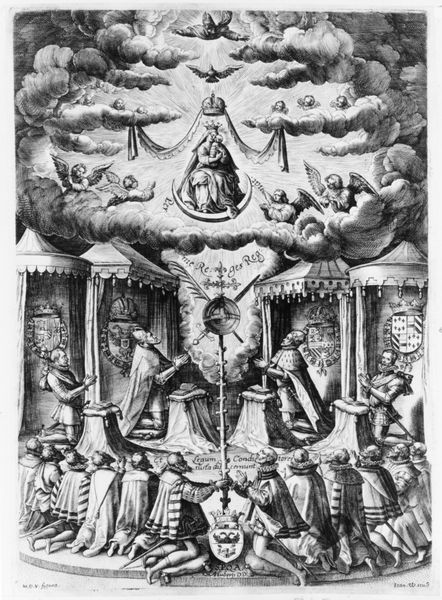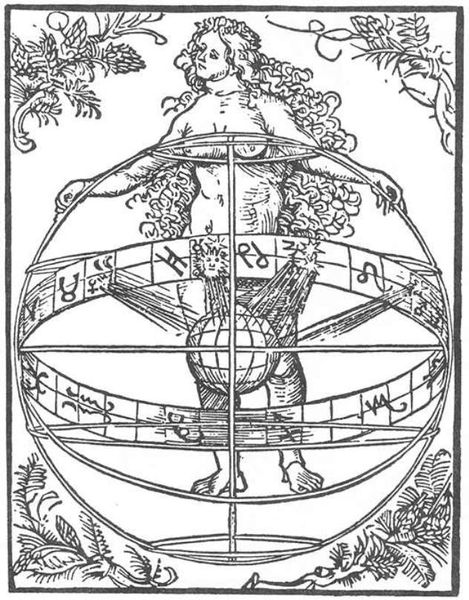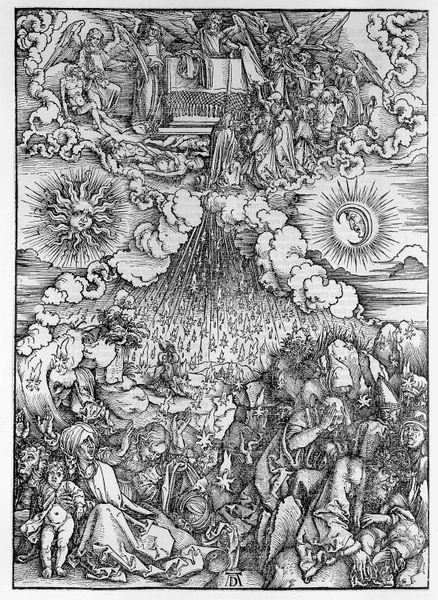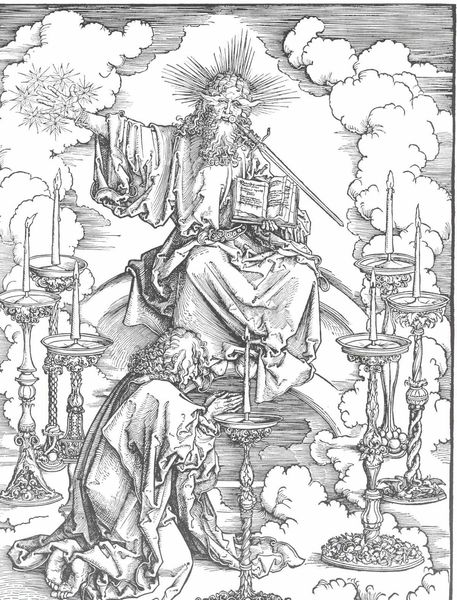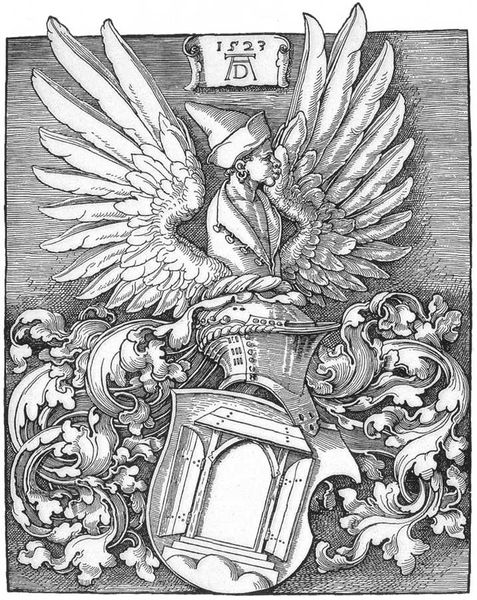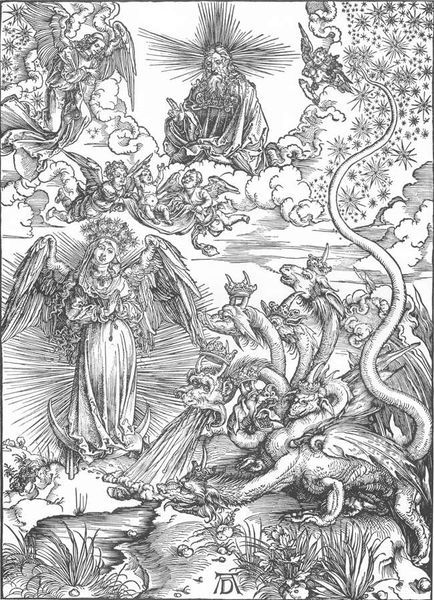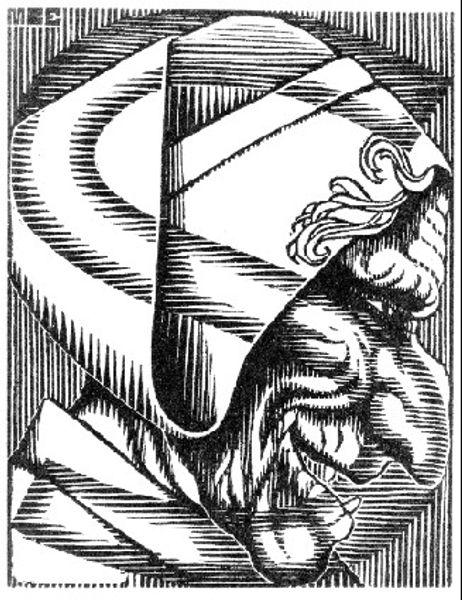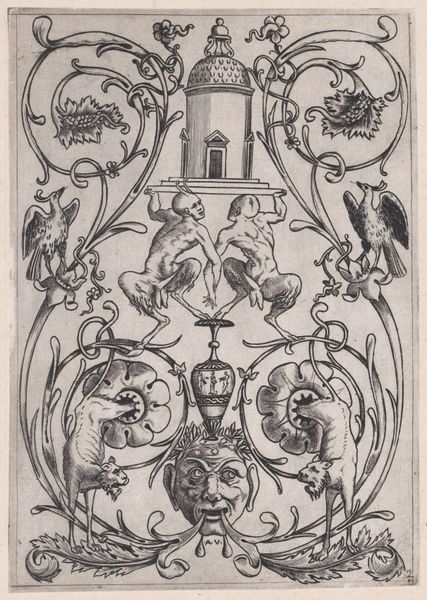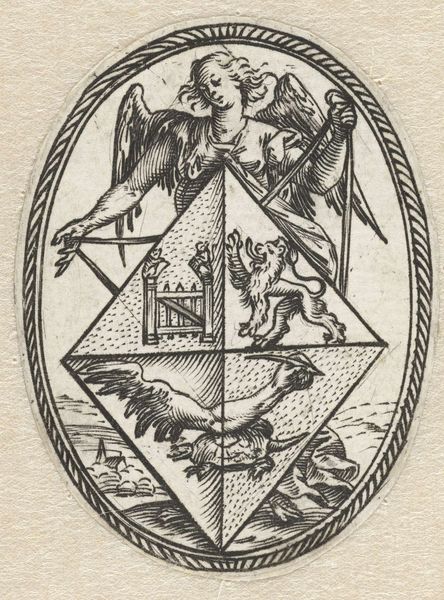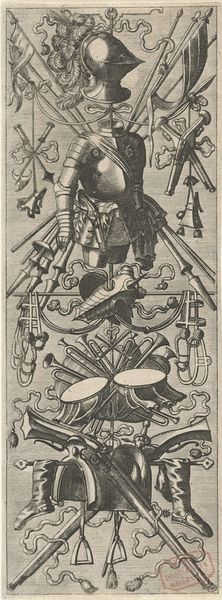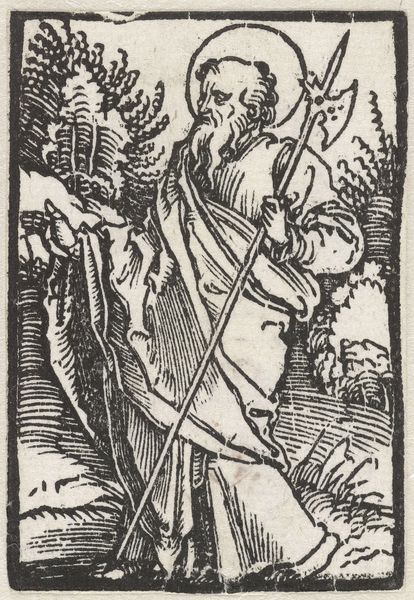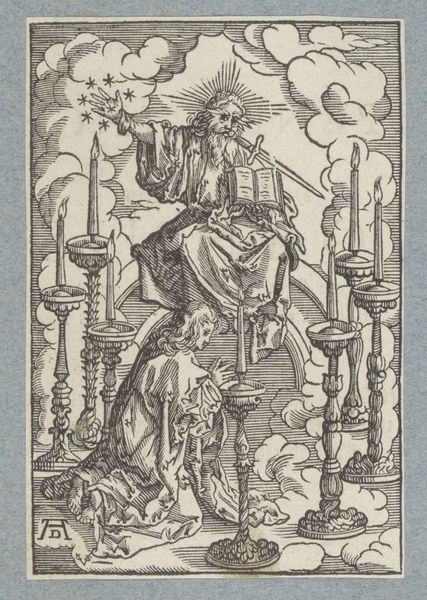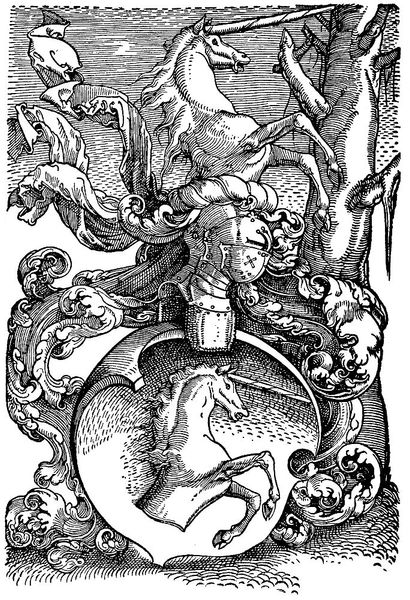
Christ's Robe Surrounded by the Instruments of the Passion, from "The Passion of Christ (Passio Domni Nostri Jesu Christi)" 1560 - 1619
0:00
0:00
drawing, print, ink, engraving
#
drawing
#
allegory
# print
#
pen illustration
#
ink
#
cross
#
highly detailed
#
history-painting
#
engraving
Copyright: Public Domain
Curator: It's almost as if it's a challenge, isn’t it? This work by Hieronymus Wierix, dating from 1560 to 1619, pulls you in with a sense of graphic intensity. It's titled "Christ's Robe Surrounded by the Instruments of the Passion." And indeed, it’s precisely what you see: Christ’s robe front and center. Editor: Overwhelming. In its stark black and white detail. I feel almost bombarded by objects. Each little cross-hatched element jumps forward, fighting for my attention. It’s dramatic, unsettling...and incredibly intricate. Curator: It’s an engraving, mind you, ink on paper, so Wierix achieves such an incredible degree of meticulousness. Considering its era, the detail is stunning. Everything from the rooster at the top to the lance at the bottom has symbolic weight. Editor: The labor involved must have been significant. All those cuts on the metal plate. I imagine the printmaking workshop where this was made, the apprentices, the smell of ink... Did he have specific patrons? I’m wondering about the market and how these engravings circulated, and to what ends? Curator: Surely, religious devotion. Wierix was known for his, shall we say, orthodox views. But there’s a lot to unpack here, even beyond that aspect. Consider, for instance, how the ladder—a symbol of Christ’s descent from the cross—competes for your attention with the dice that Roman soldiers used to gamble for his robes. There’s such an emotive power held within these instruments, so beautifully, perhaps disturbingly rendered. Editor: Disturbed, yes. I keep returning to the material act: the cutting of the plate, the repetitive printing, the paper used, then consider how such scenes justified the church in using the poor and the faithful… how those scenes acted almost as instructions. Curator: Yes, how these prints may have circulated as both devotional aids and even polemical instruments. Art making as material for societal enforcement is ever an interesting question to bear in mind. I think I might not look at passion plays in quite the same way now. Editor: Indeed, and thinking on such labor makes one consider the value extracted from artmaking within the social sphere then, and perhaps even now.
Comments
No comments
Be the first to comment and join the conversation on the ultimate creative platform.
